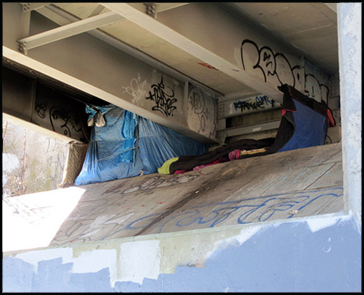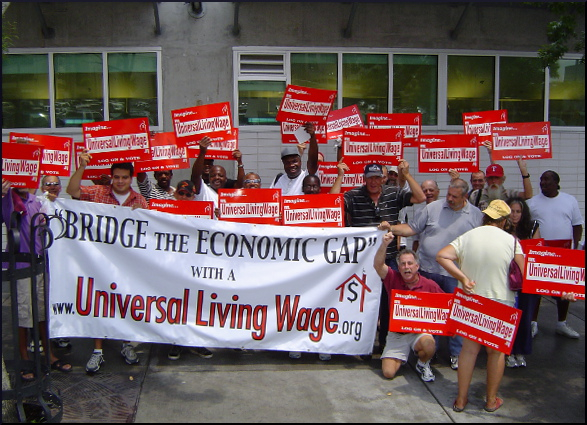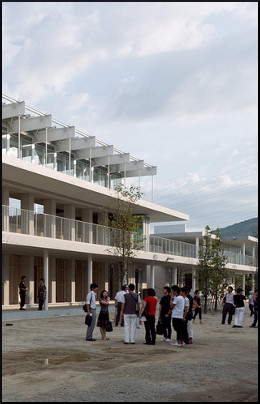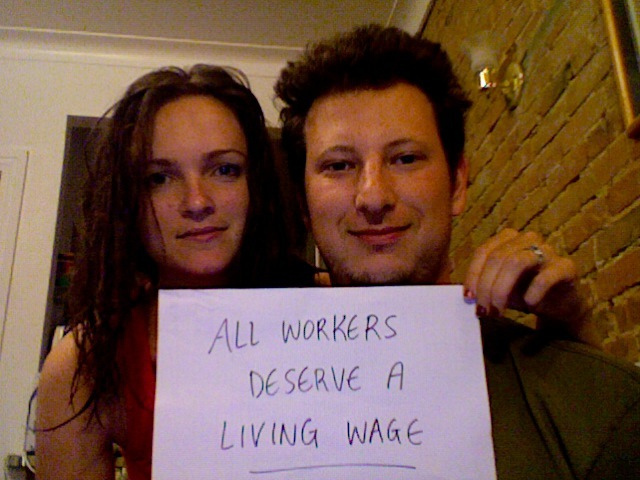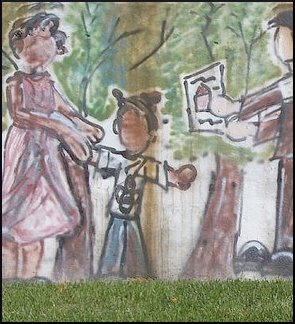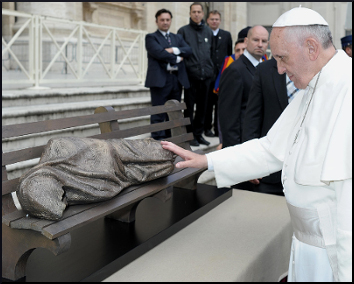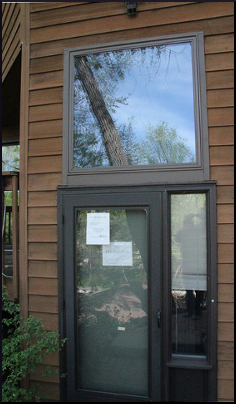
According to figures from the U.S. Department of Housing and Urban Development, nearly 240,000 people are estimated to be homeless in families, which accounts for just over 40% of the homeless. In terms of child-rearing, that adds up to an awful lot of parents who don’t have the luxury of worrying about preventing a child’s obesity with nutritious home-cooked meals served at a regular time, with the family gathered around the table. They don’t have a table, or a kitchen, or very much choice about what their kids eat. Also, it adds up to an awful lot of kids who don’t have a safe, quiet place to sleep after listening to a softly read bedtime story, or even a safe, quiet place to do their homework assignments.
Another set of numbers reckons that there are over a million homeless students across the country. A lot of kids are not getting an equal chance to make something of their lives, and there is an additional wrinkle. As Sanya Dosani reported for Al Jazeera, more than half of the people experiencing homelessness in America do not live in big cities.
Suburban and rural homeless populations are often invisible to local residents and lawmakers, experts say, so social programs are scarce and funding isn’t a priority…. The neglect of homeless youth in suburban and rural swaths of the country is most dangerously apparent in schools.
Sometimes the needs of homeless rural students are met, thanks to the McKinney-Vento Act. It allows attendance at the school a child went to before becoming homeless, so you find such makeshift (and expensive) arrangements as a child being taken by taxicab to a school in a nearby town.
Leaving aside all the other problems of homelessness that impact a child’s ability to learn, there is the social stigma. When I was in grade school, my hometown, Niagara Falls, was the site of a massive hydroelectric project that drew construction workers from all over the country. Their children enrolled in the local schools. Except for being nomadic, these were ordinary families. They had homes, albeit on wheels. Each family had a mother, and a father with a car and a good job. But the kids who “belonged” avoided the trailer kids. It’s hard to imagine how much more isolating it must be for children who live in shelters with parents who can’t find jobs, and certainly not jobs that pay living wages.
In Little Rock, Ark., the local school district teaches around 500 homeless students, and many of their needs are paid for not by tax dollars but through private funding and grants. Pulaski County Special School District Superintendent Dr. Jerry Guess says:
Arkansas requires every school district in the state to have a homeless liaison. [A typical school] has backpacks for each of the homeless children to take home each weekend that gets packed with food. The school has clean clothes for the children as well.
Georgia Mjartan, director of Our House, says:
Arkansas is ranked third worst in the nation for child homelessness for a number of reasons…. No one in this state when they think about homelessness thinks about a beautiful little baby or a teenager who’s going to school, who’s studying for the ACT.
In Cincinnati, Ohio, Laura Tolbert, a military veteran who, with her husband and two small children, had been couch-surfing for almost a year, told a Fox News reporter:
When you have kids, if you are a good parent, you will do everything that you can not to show your child that something is wrong…. [You] try to make them think that everything is normal and everything is fine and let them have a great life and childhood because you only get to be a child one time.
After this family landed in a shelter run by the local Interfaith Hospitality Network, a re-housing program placed them in an apartment where their rent will be paid for up to six months as they establish themselves, as if they are magically going to find jobs that pay living wages. However, compared to what other families are going through, this was incredible good fortune — like 1-in-5 luck. Kevin Finn, director of Strategies to End Homelessness, says:
The reality is that only about 21 percent of the families that reached out for shelter last year were actually able to come into a shelter…. It’s not at all uncommon for a homeless child to change schools six or even eight times in one academic year which means they are perpetually behind…. Three out of every ten, 30 percent of our homeless population are children.
Reactions?
Source: “Rise of homeless families,” AlJazeera.com, 12/09/13
Source: “Growing Up Homeless in Suburbia,” AlJazeera.com, 03/27/14
Source: “Arkansas struggling with homeless children population,” KATV.com, 05/20/14
Source: “Homeless children: One local family’s struggle to overcome poverty,” Fox19.com, 05/07/14
Image by unknown

